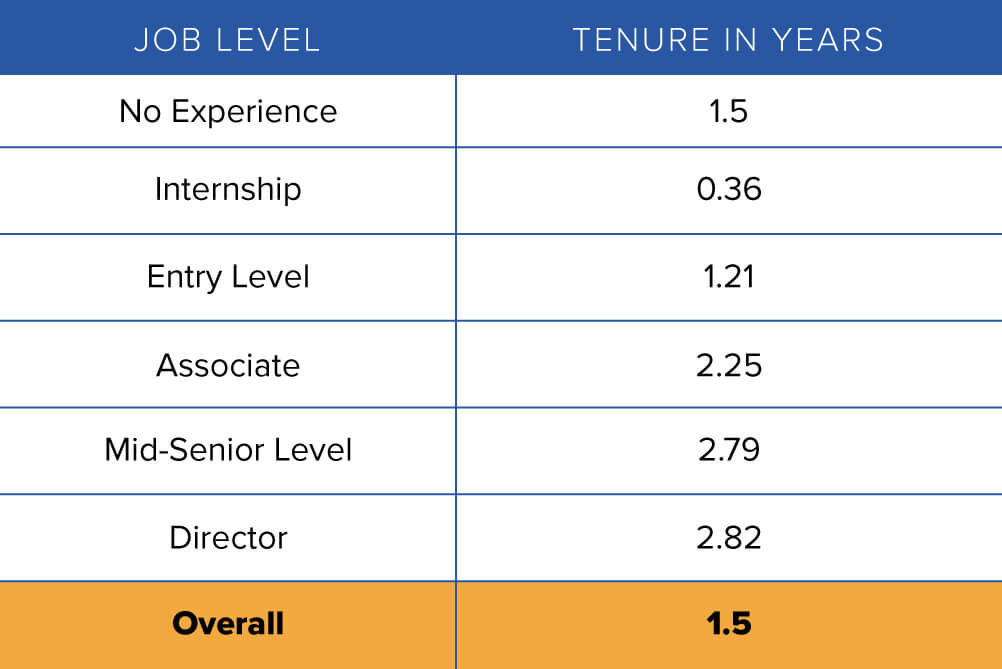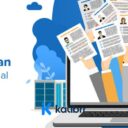Get Used to New: How Long Before Today’s Entry-Level Employees Move Jobs

The younger generation is gradually comprising the majority of the workforce, and with that is the need to be mindful of how frequently they’ll be in and out of your team
As technology has become increasingly integrated into different business processes, another inevitability across most industries is the youth movement that continues to occur in the workforce.
According to Demographic Shifts: The World in 2030– a report by global commercial real estate services firm Cushman and Wakefield– as 693 million Baby Boomers (usually defined as those born from the mid-1940’s to the mid-1960’s) reach retirement, 1.3 billion members of Generation Z (those born after 1995) will enter the labor force in the next decade. This does not even include Millenials (those born from around 1980 to 1995), or the present young majority among professionals.
Indeed, a significant number of the people in your company will eventually be on the young side– if they aren’t already– and among the realities you and most other employers will have to contend with is how relatively short their tenures will be.
TOPICS
The two-year tenure is now hardly from the norm
While a minimum of 24 months is seemingly the consensus among most professionals as the time to take at a job not come across as a job-hopper, hardly is it put into practice, particularly among entry-level professionals.
While analyzing job-seeker data that Kalibrr had accumulated throughout the platform’s history, the company discovered that most employees actually stay at their jobs for an average of about a year-and-a-half before on to another job at another company. When narrowing down the number to only include that of professionals with limited to no experience, and the average tenure was even smaller at just over 13 months.

Broken down by level, it is evident that “newbie” professionals come in to explore their career options or gain experience, and that their first few jobs are just a way to get their feet wet, but are hardly what they consider their dream jobs.
Those who took on internship roles only averaged just over four months at the job, understandable given internships roles usually only last one academic semester. However, even fresh graduates who entered their jobs with no experience or those who had a relative amount but not quite enough for non-entry level roles had notably short stints at their jobs, averaging 18 and a little under 15 months respectively.
They stay for a bit longer when the roles are in Skilled Trade or Safety and Security
Taking into consideration specific jobs or industries, some see longer tenures than others, albeit not by a significant margin. Two of these that see somewhat extended stays from employees who are at the early stages in their careers are Skilled Trade and Safety and Security, where some young professionals average tenures that are a little over two years.

Defined as “occupations that require a special skill, knowledge or ability which can be obtained at a college, technical school or through specialized training”, Skilled Trade jobs such as a physical therapist, site engineer, or programmer are understandably roles which young employees stay in longer. This is often due to some time spent training or being onboarded bt employers, as well as the time needed to transition from practicing their skills within a learning environment to using it in the real world.
On the other hand, Safety and Security is seeing professionals stay due to a similar learning curve needed in the industry. While many initially think of it involving only physical safety and security, the industry is also essential in others such as health, finance, and digital– resulting in young safety and security professionals staying longer to get their feet wet not only in their profession but also the overall industry which their employers are in.
Adjusting to the new workforce
While some older employers– and professionals in general– still turn their nose on the idea of short job tenures, this is one of the realities of having a predominantly young workforce who have an increasingly diverse amount of career and training options. With that said, it is inevitable that employees leave, and the challenge lies in many of them now doing so sooner than later.
Being a step ahead, some companies have leaned on employer branding to make sure that the workforce, in general, has a favorable impression of them as an employer. By doing this, they are able to maintain interest in their company as a place to work, which is helpful when needing to hire top talent (or in this case, replacing them with similarly qualified candidates).
Others have embraced the cycle by acknowledging their employees’ preference for taking on new challenges and gaining as much experience as possible and had evolved their company culture to be supportive of these changes, in the hope retaining good relationships with those who become past employees and eventually have them return to their team down the line.
Of course, making an effort to retain employees who perform well shouldn’t be disregarded, and understanding the motivations of today’s young workforce is one way to keep doing that. It is well documented how both Generation Z and Millenial employees hold professional development in high regard, and making sure they are continuously provided the opportunity to learn and train new things, as well as take on new and varying responsibilities, is one way to keep them engaged.
Ultimately, understanding the current and upcoming workforce– be it what skills they have, what aspects of work they consider most important, and what industries they most like to work in, among others– will play a significant role in being able to hire and retain the best of them and ensure their successful contribution to your organization’s overall goals.
For more of Kalibrr’s job tenure data or help with recruitment and employer branding, sign up for Kalibrr and start hiring better today!
Kalibrr is a technology company that aims to transform how candidates find jobs and how companies hire talent. Placing the candidate experience at the center of everything it does, the company continues to attract the best talent from all over, with almost three million professionals and counting. Kalibrr ultimately connects these talents to companies in search of their next generation of leaders.
The only end-to-end recruitment solutions provider in Southeast Asia, Kalibrr is headquartered in Makati, Philippines, with offices in San Francisco, California, and Jakarta, Indonesia. Established in 2012, it has served over 19,000 clients and is backed by some of the world’s most powerful start-up incubators and venture capitalists. These include Y Combinator, Omidyar Network, Patamar Capital, Wavemaker Partners, and Kickstart Ventures.
For more business and recruiter advice, follow Kalibrr on Facebook, Twitter, LinkedIn, and Instagram.






RMsQBtPQ
Laporkan1